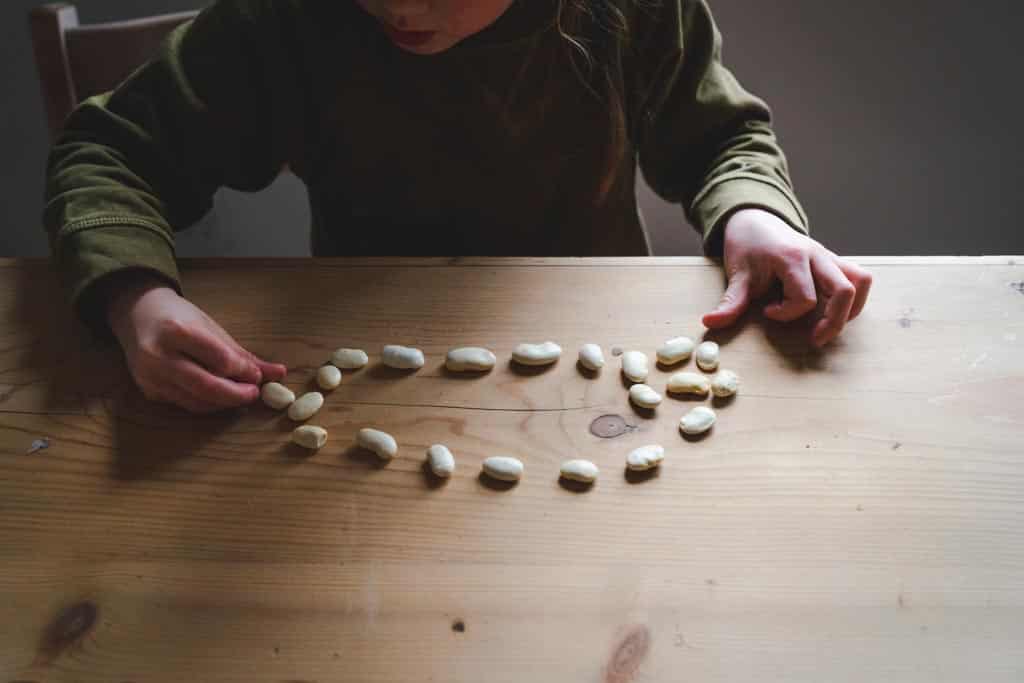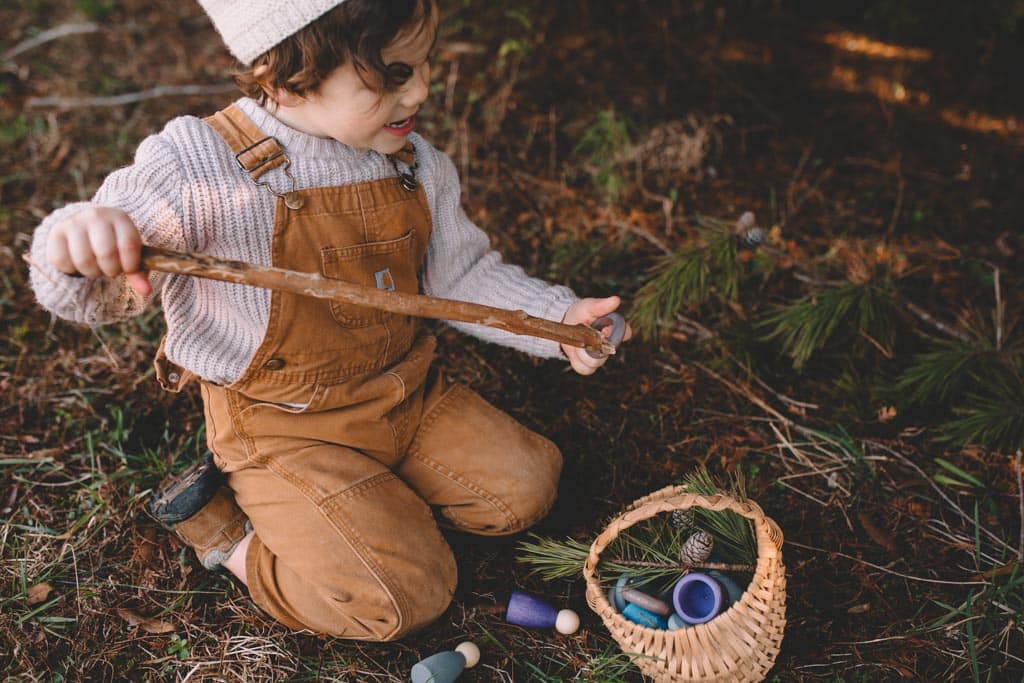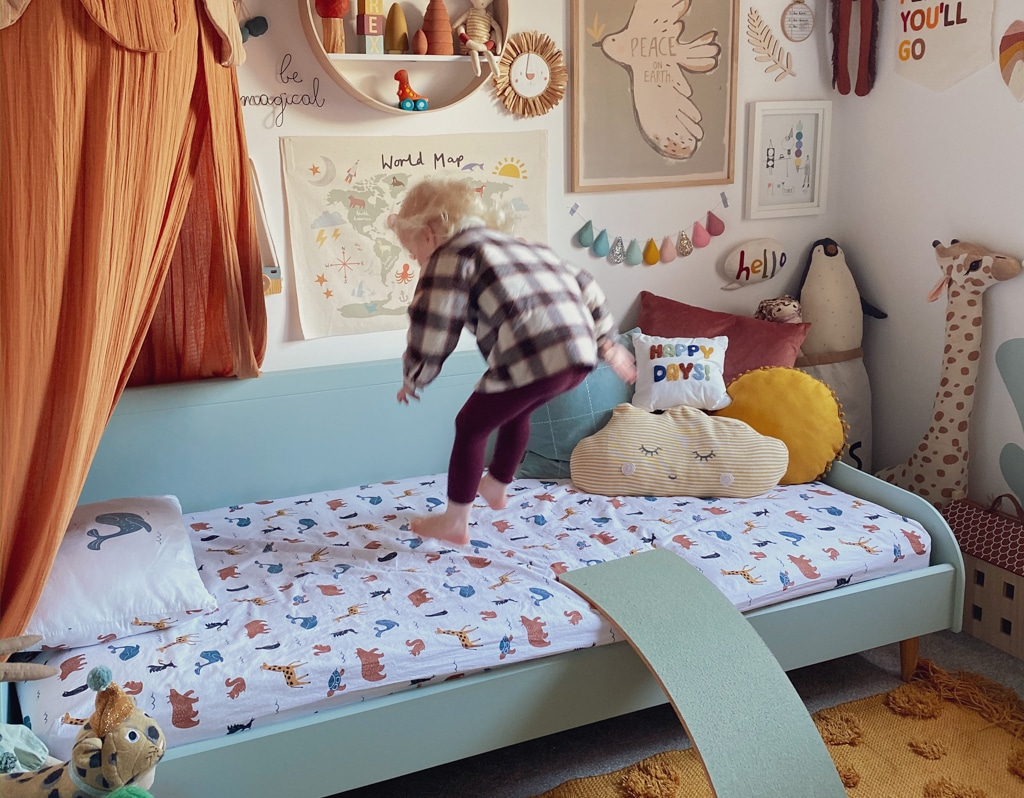Pick up a pencil and start to draw.
What is your left hand doing? It’s holding down the paper.
Now take some scissors and cut out your picture. Your left hand is busy again, holding and turning the paper as you cut.
This is bilateral coordination. It is the ability to use both sides of the body effectively and efficiently. This skill is crucial for mastering tasks like getting dressed, using cutlery, or riding a bike. Developing bilateral coordination is also essential for establishing handedness and refining fine motor skills.
Three types of bilateral coordination
- Symmetrical. Symmetrical bilateral coordination involves using both sides of the body at the same time and in the same way. Think catching a ball with both hands or doing star jumps.
- Asymmetrical. Asymmetrical bilateral coordination is for those tasks where the two sides do different things. One hand stabilises the paper while the other writes; one hand holds the button while the threads the needle; one hand holds the jar, the other twists the lid.
- Reciprocal. Reciprocal bilateral coordination is used in those situations where both sides work in an alternating fashion. Pushing the pedals of a bike, for example.
All these skills are prerequisites for confident, mistake-free writing. Our goal is to go from left to right across the page in a controlled manner.
Activities that encourage bilateral coordination
Where possible leave your child to get on with things herself.
Don’t insist that she uses both hands: set up the activities in such a way that using both hands is unavoidable.
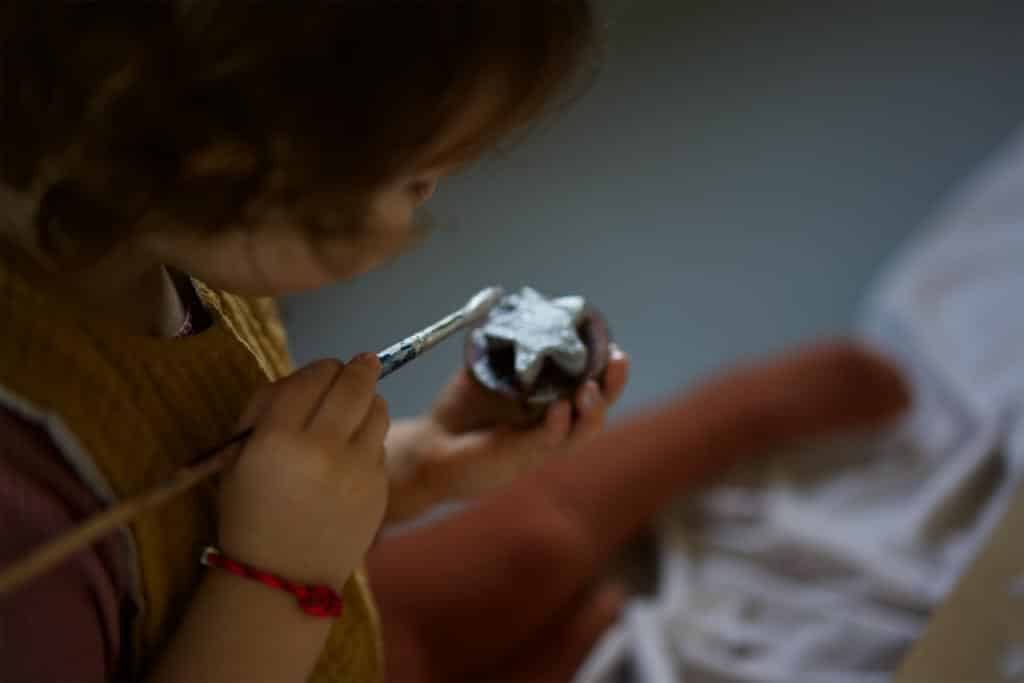
- Painting solid objects. If you’re really determined, you can get away with painting with just one hand, especially if using an easel. But there’s no way to cheat if you paint a 3-D object. You have to hold it in order to cover it completely.
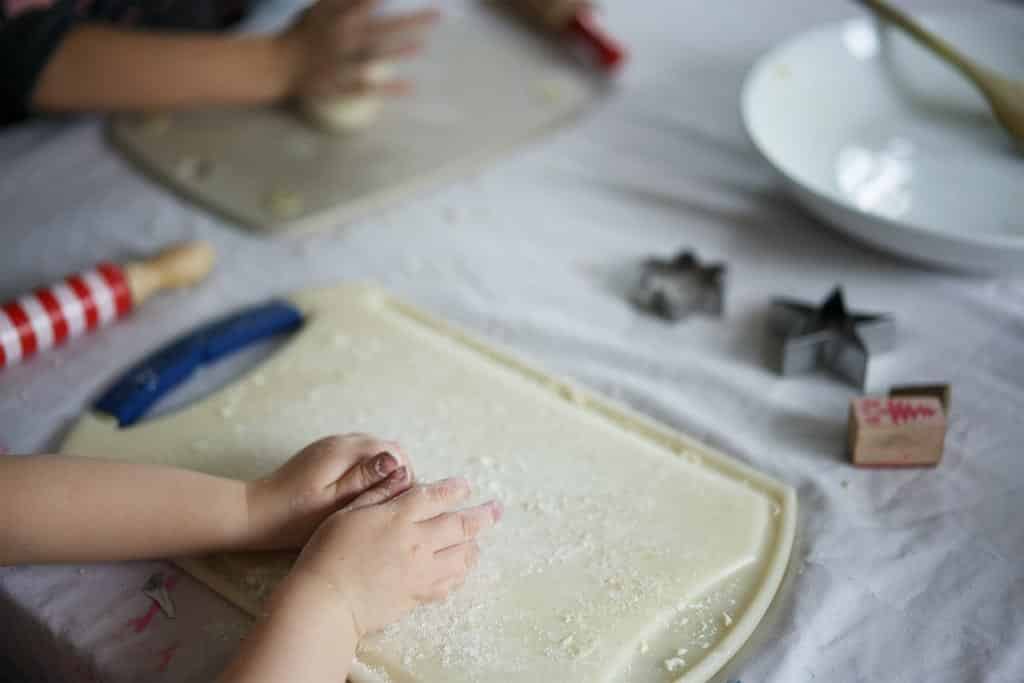
- Playing with playdough. Rolling, squeezing, and shaping playdough with both hands helps develop bilateral coordination and strengthens hand muscles.
- Building with blocks. Assembling structures using both hands fosters bilateral coordination and encourages problem-solving skills.
- Cutting and sticking. Using scissors to cut, applying glue and sticking down all demand controlled bilateral coordination. It’s why preschool teachers love collage activities so much.
- Threading beads. Threading beads are dangerous for the under threes. Choose large, safe beads or use alternatives like stacking rings. Read more about threading.
- Tearing paper. Tear sheets of scrap paper. Long strips are easier to make because you tear in a straight line. Tearing smaller pieces requires more control as you have to turn the paper as you go. Try different papers, from printer to tissue to sugar.
- Stickers. Can your child peel stickers and stick them down? It’s a real challenge, and one that only the oldest and most dextrous toddlers can manage.

- Peeling fruit. Such a simple task, but not so easy when you are two! Expect lots of mess – and lots of learning.
- Water play. Set up a water table or fill a basin with water, and provide cups and containers for pouring and scooping. Playing with sand works equally well.

- Puzzles. Encourage your toddler to complete simple puzzles, using both hands to manipulate the pieces and place them in the correct positions.
- Drumming. An empty tub and a wooden spoon make for a noisy house but a great two-handed workout.
- Clapping games. Teach your child simple clapping games, such as “Pat-a-Cake” or “Miss Mary Mack,” which require coordinated hand movements.
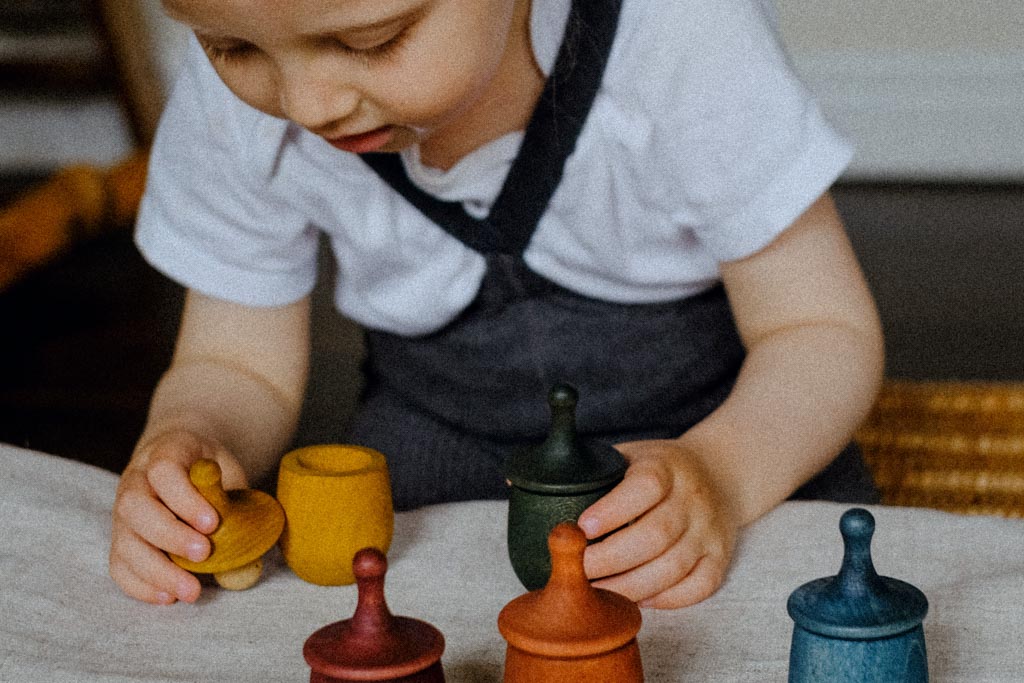
- Sorting objects. Set up a sorting activity using items such as buttons, pom-poms, or coloured pasta. Encourage your child to use both hands to pick up and sort the items into containers or sections.
- Lacing cards. Provide your child with lacing cards, which are sturdy cards with holes around the edges. Let them thread a shoelace or yarn through the holes, using both hands to hold the card and manipulate the lace.
- Scooping and transferring. Another messy one – sorry! Set up a transferring activity using items like beans, rice, or cotton balls. Encourage your child to scoop the items with a spoon and transfer them to another container, using both hands to hold and balance the spoon.
- Clothes pegs. Pegging socks to a washing line takes both strength and control and is a brilliant activity for developing pencil grip.
Final word
Bilateral coordination, like crossing the midline and finger play, is one of those secret skills that seem obvious once you know about them. But how much time do we really offer our children to figure things out for themselves?
When you’re in a hurry to get out of the door, it’s tempting to do up your child’s poppers or pull on her shoes. Without realising it, she is suddenly five and still struggling with fastenings.
Self care is a consistent theme throughout Get Set Five, our preschooler course, because nothing makes the school-start transition easier than being able to go in on that first day able to take care of yourself. You are free to focus on the learning and the fun. You finish writing your story rather than struggling to underline the date; you get more time in the playground because you could zip up your jacket in seconds without asking the teacher for help.
And how did you manage all that?
With bilateral coordination.
Are you ready for school?
Do you have a preschooler? Would you like them to develop some key skills before starting school? How wonderful to go into school on that first day feeling like you belong.
Get Set Five is a year-long course full of fun and free activities to do with your child.


